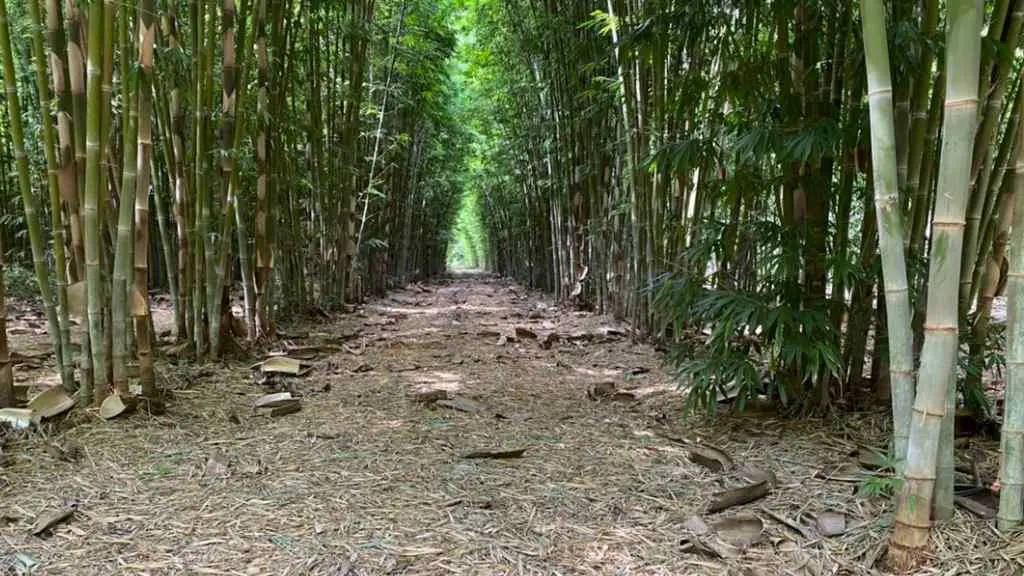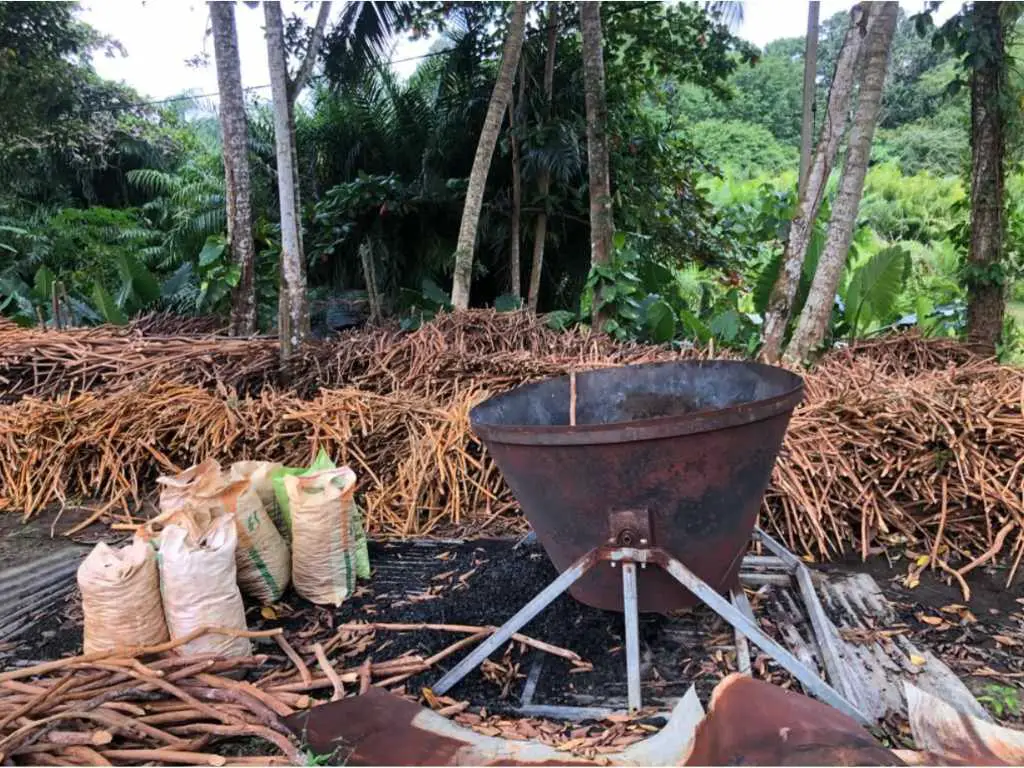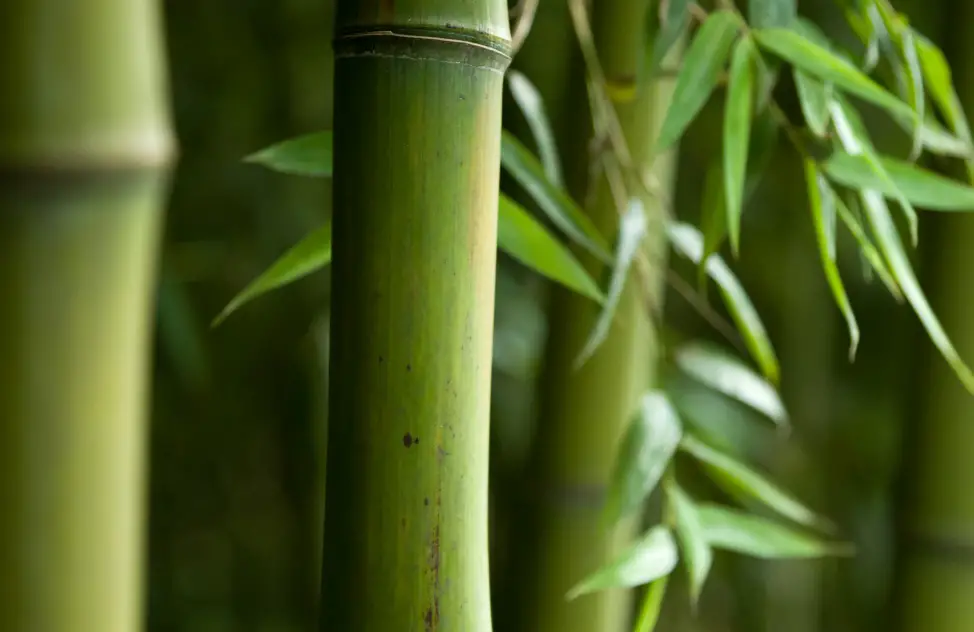The battle against COVID-19 was brutal. But according to Bill Gates, the struggle to defeat Climate Change could be much worse. And he’s right, of course. Within a year of the viral outbreak, we’d already developed a vaccine. But after decades of knowing about Climate Change, atmospheric carbon levels are still rising. There’s been some progress, but not nearly enough. And one of the best ways to accelerate that progress, as Gates himself has pointed out, is by investing more heavily in green alternatives like bamboo.
Investing in bamboo can result in the sort of win-win situation that fattens your portfolio and cleanses the atmosphere at the same time. Demand for sustainable alternatives has grown exponentially in recent years, and the global market for bamboo is expected to exceed $100 billion by 2025. Green entrepreneurs are discovering and developing new and better uses for bamboo every day. From fuel processing to engineered lumber to reforestation efforts, a growing number of businesses are delving into bamboo and looking for financial backing. So the opportunities for investors to step in and make a significant difference, and a reasonable profit, have never been greater.
In the following article, we’ll take a look at some of the newest technologies and the latest incentives for commercial bamboo cultivation. And we’ll identify some of the industry leaders who are seeking investors and could be in a position to make the greatest impact. Keep in mind, we have a pretty thorough understanding of the bamboo industry, but you should always perform your own due diligence before investing your own hard-earned money.
NOTE: This article originally appeared in Feb. 2021. The latest revisions were made in Jan. 2023.
The green tide is turning
As carbon levels increase and sea temperatures rise, the need to shift from non-renewables to renewables grows more urgent with every passing day. International treaties and state and federal guidelines are setting ambitious goals, with many nations calling for net-zero carbon neutrality by 2050. This in turn puts enormous pressure on industries, compelling businesses to innovate quickly and develop better methods and technologies.
Of course, many are looking at bamboo as an alternative to logging trees for lumber or growing corn for biofuel. Increasing numbers of green entrepreneurs are jumping on board, to make a buck or to make a difference, or quite possibly both. Not every bamboo enterprise is guaranteed to boom, but a few of them surely will. Good businesses that can develop solutions to the world’s pressing problems, and make those solutions viable and scalable, stand to turn a great profit.
Shrewd investors now have a chance to get in on the green revolution. Most of them see this as something far more than just an opportunity to cash in. Telsa shareholders, for example, have already seen enormous financial returns. And Elon Musk looks to be something of a business genius. But Musk and his investors didn’t start an electric car company merely as a way to turn a profit on a passing trend.
Moral inclinations and environmental imperatives
Pioneering companies like Tesla recognize the notion of a sustainable paradigm shift as a global imperative. But in order for the world to adopt more sustainable technologies, the alternatives have to be economically competitive with fossil fuels and traditional resources. And to make that happen will take some aggressive research and development, all of which will require financial investment.
In the last 20 years, we’ve seen environmental awareness spread like running bamboo on a pristine pasture. Perhaps Al Gore’s 2006 documentary, An Inconvenient Truth, marked the tipping point for Climate Change consciousness. And Greta Thunberg’s youthful activism now signals the boiling point. But people need more than cheerful slogans and provocative bumper stickers. We need real solutions.
The general public is teeming with good intentions. But in reality, the radical change we need isn’t going to happen without a sufficient profit motive. It calls for the same sort of incentivizing that gave us a host of COVID vaccines in a record-crushing nine months. It might also take a catastrophic series of summer heatwaves, autumn hurricanes and winter power outages. But it seems that policymakers and big business leaders are finally seeing the light.

Bamboo, a growing industry
Unfortunately, investing in a socially responsible and financially profitable bamboo company isn’t as simple as picking up an arrangement of lucky bamboo from your local hardware store. Bamboo is a wildly diverse industry, branching into all different sectors of the economy. It’s also a relatively young industry, lacking a certain degree of infrastructure, at least in the US. All of this contributes to an atmosphere of high risk and abundant opportunity.
People are excited to plant bamboo, knowing that it’s the fastest-growing plant on earth, ready to harvest within five or six years. Bamboo grows quickly and easily, with fewer agricultural inputs than other crops and a far greater capacity to sequester carbon. Fresh shoots can be sold as food, mature poles can be used in construction, and remnants can be turned into fuel, biochar, or pressed particle board. Bamboo fiber is also a viable source for paper and textiles.
But in the US and Europe, the processing industries are still in their infancy, if they even exist at all. In other words, if you want to turn your Florida-grown bamboo into some super soft bamboo fabric, or into tree-free paper, you might need to ship it to China to be milled. Consider the shipping costs, and you quickly see the costs going up and the sustainability going down.
(Take a look at our in-depth article on The challenges of bamboo farming.)
Growth potential
The demand for bamboo in the US and America is blossoming though, and many businesses and consumers would prefer to source their raw materials domestically. So clearly there’s some great opportunity for those who can grow bamboo on a competitive scale and implement the logistics to bring their harvest to the marketplace.
More importantly, establishing the domestic infrastructure for the processing of bamboo is going to be crucial. Every week I hear from farmers who want to start growing bamboo stateside, but don’t know where to sell their harvest or have it processed.
Farmers are already planting bamboo in southern Europe and the southern US. Factories that can turn that bamboo into engineered plywood or ethanol fuel will fill a great gap in the industry. Here’s a great chance to fill an unmet need. At the same time, the presence of these factories would make commercial bamboo cultivation all the more attractive. Without processing, most farmers can only sell their bamboo in the form of edible young shoots or as raw poles. As such, many are hesitant to commit to a full-scale bamboo plantation.
Gaps in the bamboo market
Ethanol biofuel plants are beginning to open in the US, capable of converting plant mass into low-emission fuel. Until recently, food crops like corn were the main source for ethanol production. But relying on food for energy can lead to the unfortunate side-effect of dramatically increasing food prices. Cellulosic ethanol, from bamboo for example, relies on fibrous plant matter rather than edible grains that are higher in sugar.
As of 2021, there are 21 cellulosic ethanol plants operating or under construction in the US. It’s hardly a crowded market, and in the decades to come, the demand for biofuel is almost certain to skyrocket. Profit potential? Check. Essential for reducing atmospheric CO2 levels? Check.
Equally important, bamboo’s remarkable tensile strength makes it an excellent building material. Steel manufacturing and concrete production are two of the biggest carbon-emitting activities on earth today. Unfortunately, the alternatives to these conventional construction materials remain cost-prohibitive and far from competitive. It’s one of the areas where investment is most needed for research and development. It’s also an area where bamboo could fill a crucial niche.
Engineered bamboo, as an alternative to the more environmentally detrimental building materials, promises a solution that is already within reach. This process, similar to layering plywood, turns the round and irregular bamboo poles into standard-sized, dimensional lumber, which can be used in commercial construction.
From farm to factory, bamboo is immeasurably better for the atmosphere. And currently, the vast majority of facilities that process engineered bamboo are in Asia. Setting up a factory in the US would be a game-changer for American bamboo farmers. Furthermore, there’s still plenty of room for research and innovation to improve the process, making it cleaner, more efficient, and increasingly competitive.
Bamboo’s looming potential
With the planet in peril, our future may be hanging by a thread. But sustainable bamboo fabric is more than just a string theory! Bamboo clothing and textiles hit the market close to 20 years ago, making a sumptuous sensation. Bamboo farming is far easier on the earth than cotton, requiring much less in the way of irrigation or pesticides. And bamboo clothing is ever so soft and luxurious on the skin.
Fabulous though it may be, and with tremendous market potential, there are still no facilities outside of Asia that are turning bamboo into fabric. Here again is another glaring gap in the market. If you want to grow bamboo in the US and make it into clothing, this represents a great obstacle. But if you want to set up a factory, say in Alabama or Missouri, to mill American bamboo into textiles, it’s a big opportunity, with zero direct competition.

Bamboo cultivation
For centuries, China has been cultivating and utilizing bamboo for its myriad uses. As have other cultures in Southeast Asia and the Pacific Islands. And to this day, those regions remain the focal point of the bamboo industry, especially China.
But as bamboo grows more popular, and people around the world recognize its immense potential for utility and ecology, interest in bamboo cultivation is soaring. As mentioned elsewhere in this article, Americans and Europeans are trying to generate their own bamboo farms, in the interest of eliminating the costly shipping of bamboo around the globe. But bamboo doesn’t necessarily grow well on those continents, and the overhead (labor and land costs) can be prohibitive.
The best regions and climates for growing bamboo are around the equator, in the developing world, as it were. Tropical bamboo, the giant kind with the hardest wood, thrives in the heat and humidity. Furthermore, land is plentiful, and the effects of Climate Change are being felt most directly.
Farmers throughout sub-Saharan Africa and Southeast Asia are eager to get on board the bamboo gravy train. They have land, or access to it, but lack the start-up capital. For shrewd investors or entrepreneurs, these regions are rife with opportunities. Conditions are ideal for bamboo, and the opportunities are tremendous.
As the industry grows, the bottleneck of raw materials is worsening, and in my opinion, this represents the greatest opportunity for investment. Not only is there the chance to reap financial rewards from a new cash crop, but of course, it’s also a crop that can produce great benefits to the environment, restoring degraded land and drawing CO2 from the atmosphere. And in the developing world, bamboo can also provide jobs and economic opportunities for disadvantaged communities.
Contact Bambu Batu directly to learn more about these opportunities for direct involvement in bamboo cultivation.

Bamboo innovators and industry leaders
As of 2022, we are not aware of any bamboo companies trading on the New York Stock Exchange. But there are still a number of opportunities for private investment. Below is short list of interesting bamboo businesses, presented in alphabetical order.
BambooLogic, European Bamboo Plantations
BambooLogic is actively seeking partners and investors to expand the cultivation of bamboo in Europe. Asia exports more bamboo to Europe than any region of the world. By growing more of their own bamboo, Europeans could reduce their dependency on foreign goods and reduce the carbon footprint associated with all the shipping and transportation.
Based in the Netherlands, they are currently focused on growing bamboo in southern countries like Portugal, Spain and Italy. Not only does bamboo have the potential to put degraded and abandoned agricultural land to good use, it can also provide a reasonable income for farmers in some of the more rural corners of the continent.
EcoPlanet Bamboo
Bamboo forestry forms the backbone of the bamboo industry, and this American-based company is working on bamboo forestation projects across Africa and Central America, with plans to expand into Southeast Asia. EcoPlanet Bamboo has been planting thousands of acres of native and imported bamboo species in Nicaragua, Ghana, and Kenya, alongside other native trees and vegetation, to restore the forest and provide economic opportunity for the local population. Bamboo reforestation efforts around Rwanda also provide essential sustenance for endangered mountain gorillas and golden monkeys.
A privately-held company, EcoPlanet is also part of an ambitious project in the Philippines, planting bamboo as a way of regenerating degraded land and restoring tropical forests. Here again, they are working with local populations to create jobs and industry, and to see that the bamboo plantations are well-managed.
(Check out our detailed story on Bamboo farming in Kenya.)

Kanger International
Kanger is probably the largest manufacturer and processor of bamboo building material in the world. Based in China, they have been taking raw bamboo and turning it into bamboo flooring and other products since 2004. In 2020, they relocated their main factory from Ganzhou, Jiangxi Province to Jingzhou, prompting a significant increase in productivity. They are a publicly-traded company on Asian stock markets.
Moso International
Another major player based in the Netherlands, Moso International has led the European market in bamboo materials since 1997. Specializing in sustainable materials for interior and exterior use, they provide residential and commercial bamboo flooring and paneling, and have also worked with major car manufacturers. They are a privately held company.
Planboo
Not strictly a bamboo business, Planboo specializes in converting sustainable biomass into biochar, and then generating high-value carbon credits in the process. Over the past three years, they have developed some critical tools and technology for measuring, reporting and verifying (MRV) the carbon sequestered through biochar production, working directly with industry leaders like Verra and the European Biochar Certificate (EBC).
Biochar is one of the most effective ways to draw down atmospheric carbon and store it away for hundreds of years. Unlike other programs that generate carbon credits with sophisticated technology or cryptic reporting methods, biochar is very tangible and straightforward. You can literally look at a cubic meter of biochar and measure its carbon content (roughly 80 to 90%), and then physically bury it in the ground.

Bamboo is an optimal form of biomass to use in biochar production because it is so fast-growing and renewable. Bamboo absorbs CO2 more quickly than any other woody biomass. And its hollow poles are easier to convert into biochar than thick, bulky tree logs. For these reasons, Planboo is very eager to work with and train bamboo farmers.
DISCLOSURE: I started working directly with Planboo at the beginning of 2023, and that’s because I’m a great believer in the ecological and social benefits their program is bringing to farms and communities in the Global South.
Plyboo, engineered bamboo lumber
In the US, the biggest name in engineered lumber is probably Plyboo, based in San Francisco, CA. They are a privately-held firm specializing in laminated bamboo for flooring, cabinetry and construction. They sell their products throughout the world, but the raw materials all seem to come from China, where the Moso bamboo grows and gets processed.

If you’re looking to get involved, Plyboo works in partnership with dealers around the globe. And they are probably looking for more. Perhaps with the right incentives and investment, they could be persuaded to open a factory or two in North America. Or if you were thinking of launching your own bamboo construction material enterprise, this would be one of your leading competitors.
Companies like BamCore, Dasso, and Lamboo may also be worth looking at.
Producers of bio-ethanol
Bioethanol is an especially interesting concept. Not only does it offer a cleaner-burning fuel that produces oxygen and collects carbon as it grows, but it also creates an easy avenue for bamboo farmers to sell their crops. An ethanol plant may not pay top dollar for bamboo, but the quality and condition of the bamboo is immaterial. It’s all biomass. Farmers can sell their top-quality poles elsewhere, and bring the remnants to the biofuel facility. Or farmers can plant faster-growing species with thinner poles, unsuitable for building material, and still sell it for fuel.
A number of companies are now in the business of developing better technology and building new facilities to convert cellulose into fuel. These include such giant corporations as the food processing ADM and chemical producer DuPont. But this burgeoning industry is attracting lots of interest and there’s still plenty of room for investment.
Alliance Bio-Products in Florida, LanzaTech in California, and Poet-DSM Advanced Biofuels in Iowa are three pioneering ventures worth looking into. Assuming that these companies are adopting sensible strategies under prudent management, they could be very good investments.
Bamboo research
Bambu Batu recently started building an online archive to support and promote bamboo research projects around the world. Every day we speak with farmers, scientists and entrepreneurs in Asia, Africa, Europe and the Americas, striving to build and share the knowledge surrounding bamboo, its many species and its many uses.
For investors looking to support a worthy cause, whether it’s a for-profit enterprise or a non-profit charity, there are projects happening everywhere. In Vietnam, for example, they are studying the use of bamboo to remove toxic, wartime defoliants from the soil. In Nigeria, they are conducting similar research, using bamboo to restore landscapes degraded by oil production. Elsewhere in Africa, groups are looking at bamboo’s potential to help with reforestation, and the use of bamboo biochar to reinvigorate depleted soil.
Many of these projects are directly involved with university research departments, and some of them are happening independently. Most of them also have ties with some type of business venture, because their ultimate goal is to see bamboo providing economic opportunity and improvement for the local populations.
Feel free to contact Bambu Batu directly to learn more about these projects and opportunities.
Conclusions
We are not financial advisors, and we understand that investing in energy and building materials can be a tricky business. And you should absolutely conduct your own research before investing your money in a bamboo enterprise of any kind. But having said that, we feel like we have a pretty good grip on what’s happening in the bamboo industry. And we think some of the most promising opportunities for investment are in the areas of research, energy, and construction.
With further, well-funded research and development, bamboo offers a vast array of possibilities. In terms of reducing CO2 emissions, it can be a great substitute for fossil fuel-based energy and carbon-intensive manufacturing. We already know that bioethanol fuel is a viable alternative and that engineered building materials from bamboo can reduce the need for steel and concrete. Measurable evidence can also demonstrate bamboo’s effectiveness at drawing down CO2 from the atmosphere, and biochar can store this terrestrially beneficial carbon in the ground for centuries to come.
We’ve seen the environmental realities, and now it’s becoming a financial reality. The hidden costs of fossil fuels, steel and concrete, as well as surging prices for lumber and energy, are forcing us to finally give bamboo the attention it deserves. So we can expect the bamboo industry to continue growing.
As environmental and economic conditions intensify, so does the need to explore alternatives like bamboo. New products are developed all the time, and the demand for bamboo grows. And as it does, bamboo farming looks more and more attractive. Indeed, this could be the most promising area of investment of all.
There’s never been a more exciting time to invest in bamboo. So what are you waiting for?
Learn more
If you found this article about bamboo investment interesting and informative, you might also want to check out some of these related pages and stories.


























Has anyone actually invested with bamboologic? I’m interested and inquired with them but it’s hard to research if it’s a legit operation.
Yes, I’ve spoken with them on multiple occasions and attended their webinars. They are without a doubt the real thing.
Are there publicly traded stocks or etfs yet in this that get decent ratings from msci?
Currently no, but we are working on this.
Anyone interested in investing in a Bamboo Plantation, let me know. I have 200 hectares of land where I can plant Bamboo in the Philippines.